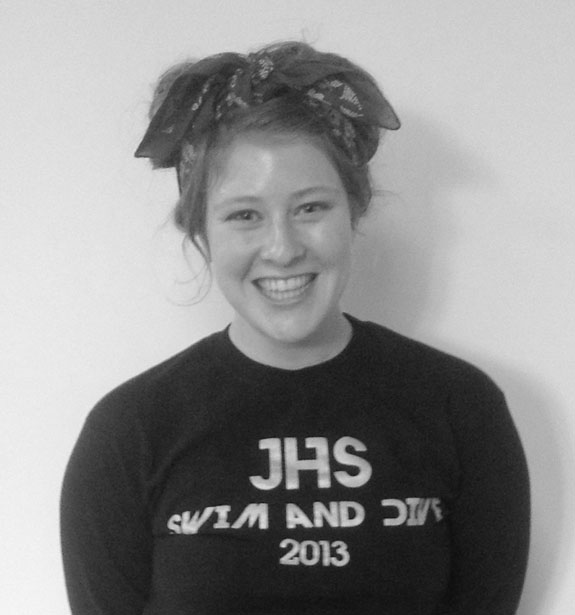Asian Invasion Part 2: Japan Edition
March 13, 2013
Cosplay
Getting ready for an anime convention, junior Anna Lam packs the night before to prepare for Anime Iowa in Iowa City. Her costumes, accessories and sometimes her wigs all go into a suitcase to cosplay at the convention. The morning of Anime Iowa, Lam gets ready by putting in her circle contact lenses, which gives her the appearance of larger, more doll- like eyes, and then she does her makeup. After her makeup is done she puts on her costume which is followed by her wig. Finally, she puts on accessories and other final touches to turn into whoever she is cosplaying as.
Cosplay, as Lam defines it is, “simply dressing up as a cartoon person.” The most common type of people to cosplay as are characters from animes and manga, different forms of Japanese cartoons.
Lam’s first experience with cosplaying was closet cosplaying for a FYE (For Your Entertainment) store event. Closet cosplaying is when you cosplay as a character using clothes that you can find in any store, not things that you buy online specifically for your character.
Each costume is a lot more than just finding the right dress or shirt to look like your character. Some people spend hundreds of dollars on things like wigs, costumes, and accessories to look as much like their character as possible.
“I get home from Anime Iowa and start planning and looking for costumes for next year,” Lam said.
When going to a convention, like Anime Iowa, there are a lot of things to do. Anime Iowa has things like panels and dealer rooms to buy things for future costumes.
“[Anime Iowa is] different for a lot of people,” Lam said. “I like walking around and taking pictures and doing photo shoots. I also like walking around and talking with other people.”
You do not have to be obsessed with anime or manga to do Cosplay or go to conventions. All you have to do is know enough about the person you are dressing up as.
“Chose who you want to be,” Lam said. “No one is stopping you.”
Learning the language
For senior Leanna McAllister, two weeks during the summer are comprised mainly of speaking in Japanese and experiencing the culture. Every morning at the Japanese Concordia Language Camp, “Mori no Ike,” she eats a breakfast of miso soup and green tea after doing morning exercises. Next she has classes and various clubs devoted to learn about the culture and how to speak the Japanese language. “I got really into the the language,” McAllister said. “It’s fun to learn and I like the culture.”
The camp itself, which is located in Dent, Minnesota, has 90 students, and with the staff members, houses about 110 people.”When the camp is up,” McAllister said. “We usually double the population of the town.”
Mori No Ike is an immersion camp in which almost everything is spoken in Japanese all the time. “They make you jump right into it,” McAllister said. “You’re not suppose to speak English so we end up having to gesture with a lot of things.”
Along with full immersion, the two-week camp consists of two classes, one in the morning and one in the afternoon, along with two different club activities. “The morning club changes everyday for the two weeks,” McAllister said. “Sometimes they are cultural and sometimes they aren’t.” The second club in the afternoon lasts one week and is about anything from cooking to drama.
McAllister has been going to the camp since the summer of 2009 and in 2010, went on a trip to visit Japan. “It is a very orderly place,” McAllister said. “There is a stereotype that it isn’t fun at all but it is. Japan is very pristine and orderly and the people are very kind.”
While in Japan, McAllister was able to work on her reading in Japanese from the street signs. She also was able to talk to Japanese students. “We were going to a temple with my family, and people said “excuse me” to me in English,” McAllister said. “They were a couple of highschool kids with a teacher and asked me if I would speak English with them.”
Even though McAllister really likes learning Japanese she is not looking into doing it as a profession. “I like learning other languages as well,” McAllister said. “I definitely want to continue it in the future though.”
Studio Ghibli and Hayao Miyazaki
Studio Ghibli movies involve plots varying from two sisters’ experiences with forest spirits, a girl who falls in love with a sorcerer that has no heart, and a young boy and his sister’s problems during World War II in Japan. One specific movie, “My Neighbor Totoro,” was junior Katie Landy’s first experience with movies made by Studio Ghibli. Then, years later in seventh grade, she got back into watching them. “I was at my cousins house and we were bored so we were looking through their old VHS’s,” Landy said. “I saw Totoro and remembered that I had liked it as a kid so we decided to watch it.”
After that, Landy started looking into other films such as “Kiki’s Delivery Service,” “Howl’s Moving Castle,” and one of the newer films made by Ghibli, “Ponyo.”
Studio Ghibli is a Japanese animation studio that makes primarily movies for young children. One of the most well known directors that makes movies produced by Studio Ghibli is Hayao Miyazaki. “Studio Ghibli is like the Disney of Japan,” said Landy. “Miyazaki is like the Walt Disney.”
Miyazaki’s most well known film in America is “Spirited Away.” This is mainly about a young girl named Chihiro whose parents end up getting turned into pigs by the witch that owns a bath house that Chihiro ends up working at.
Most Studio Ghibli movies are very different compared to children’s movies in America. “When watching a Ghibli movie you have to keep an open mind,” Landy said. “Most of them are fantasy and some of the weird things that happen in the movies are probably from cultural differences.”
Even though Ghibli has produced 17 films, Landy’s favorite is still the first one she saw. “I love ‘My Neighbor Totoro,'” Landy said. “I loved it as a little kid and it is weird but adorable and I just enjoy it a lot.”






